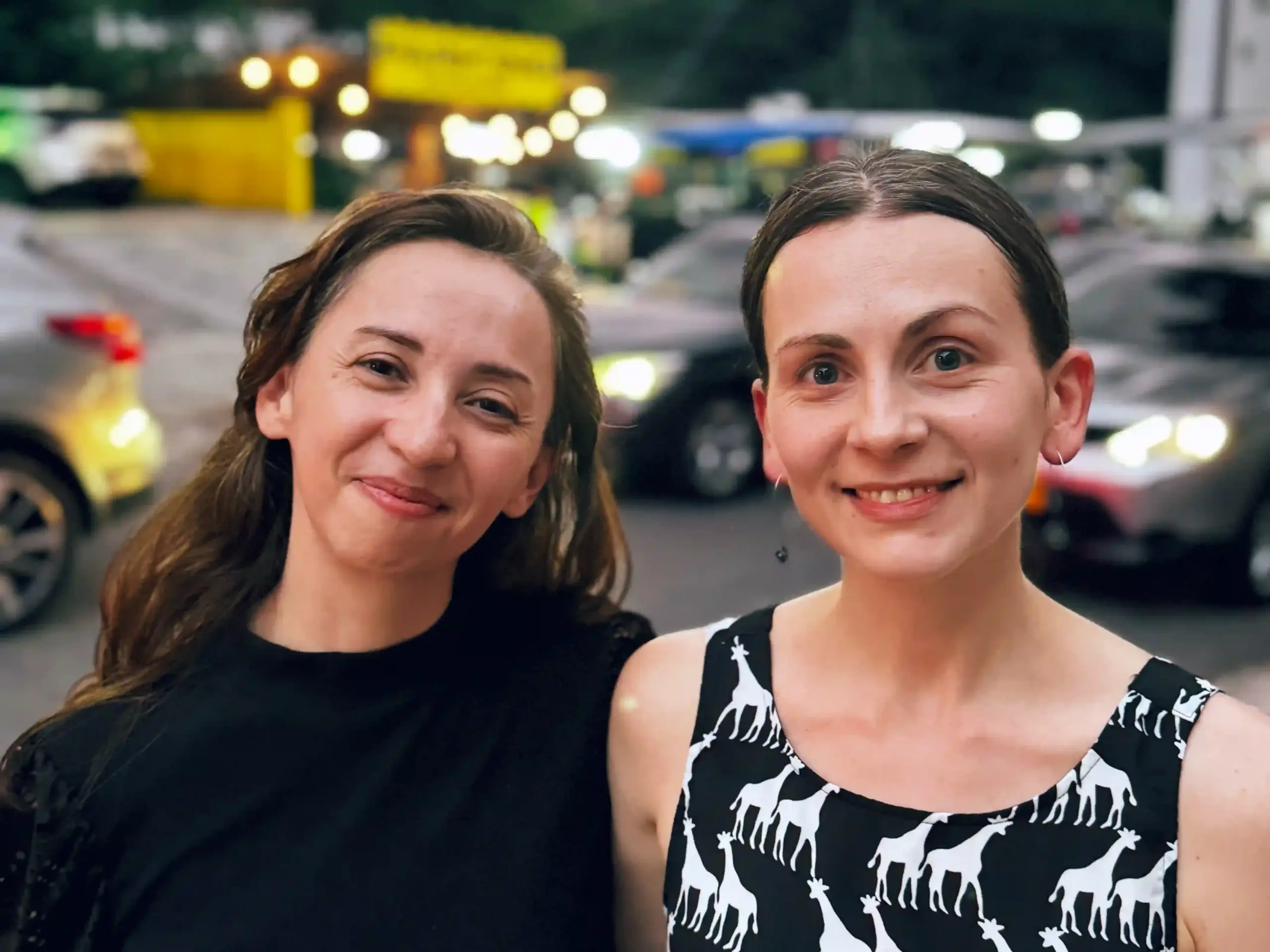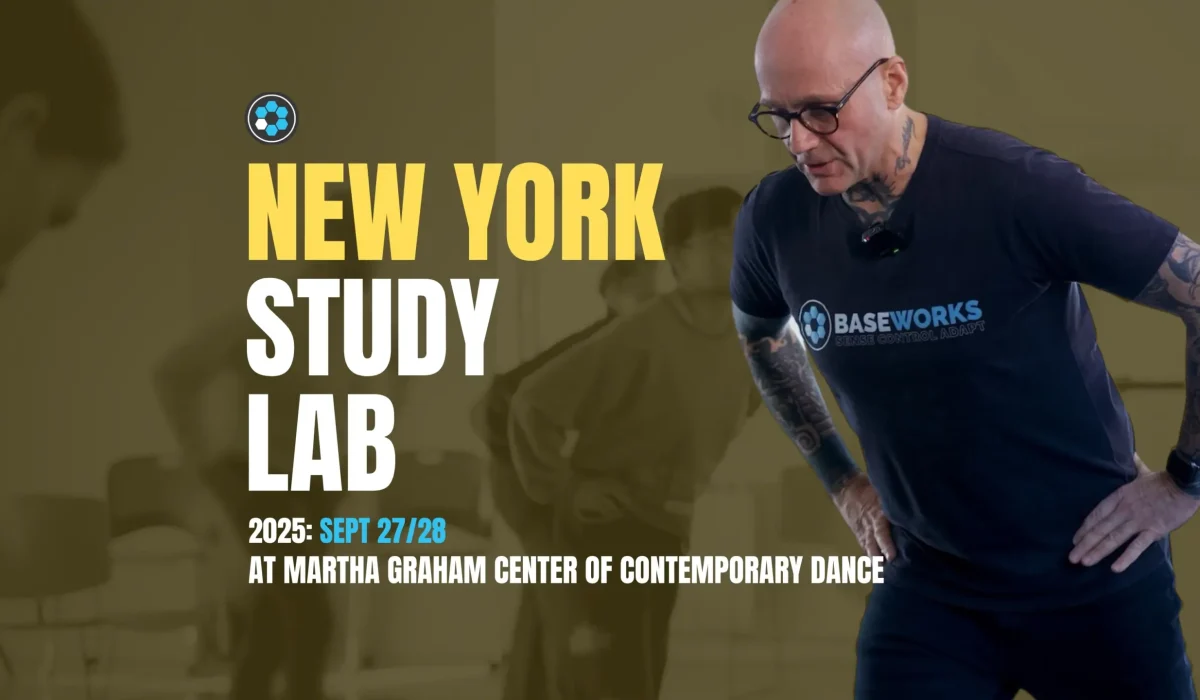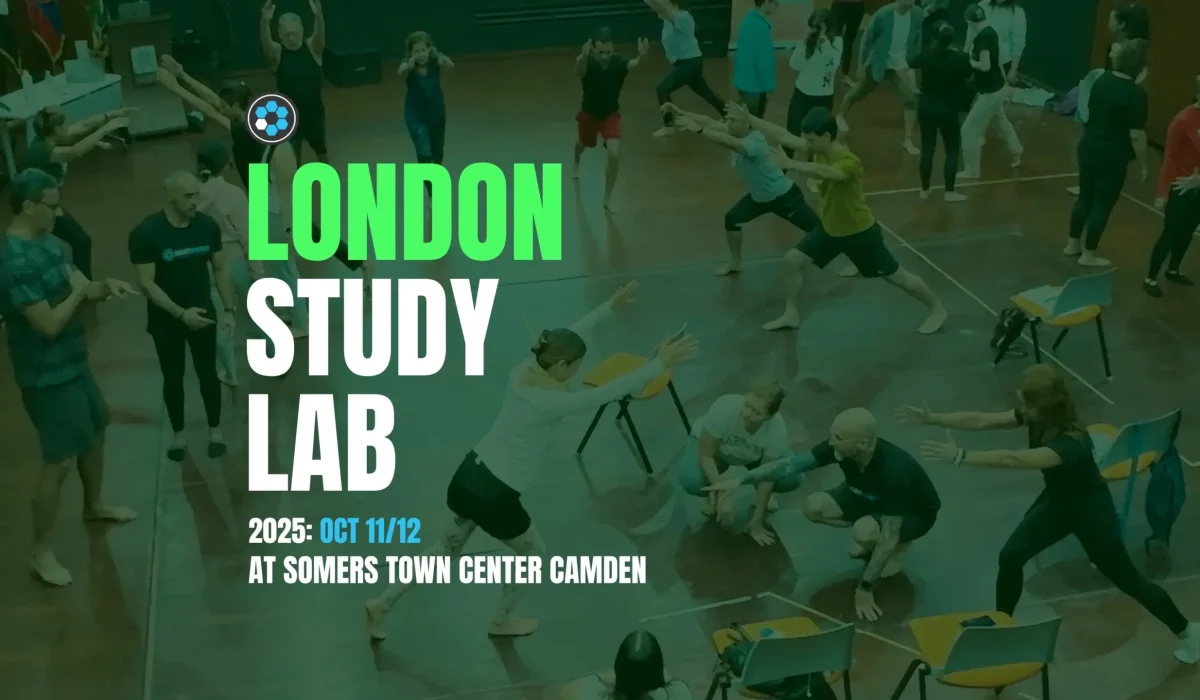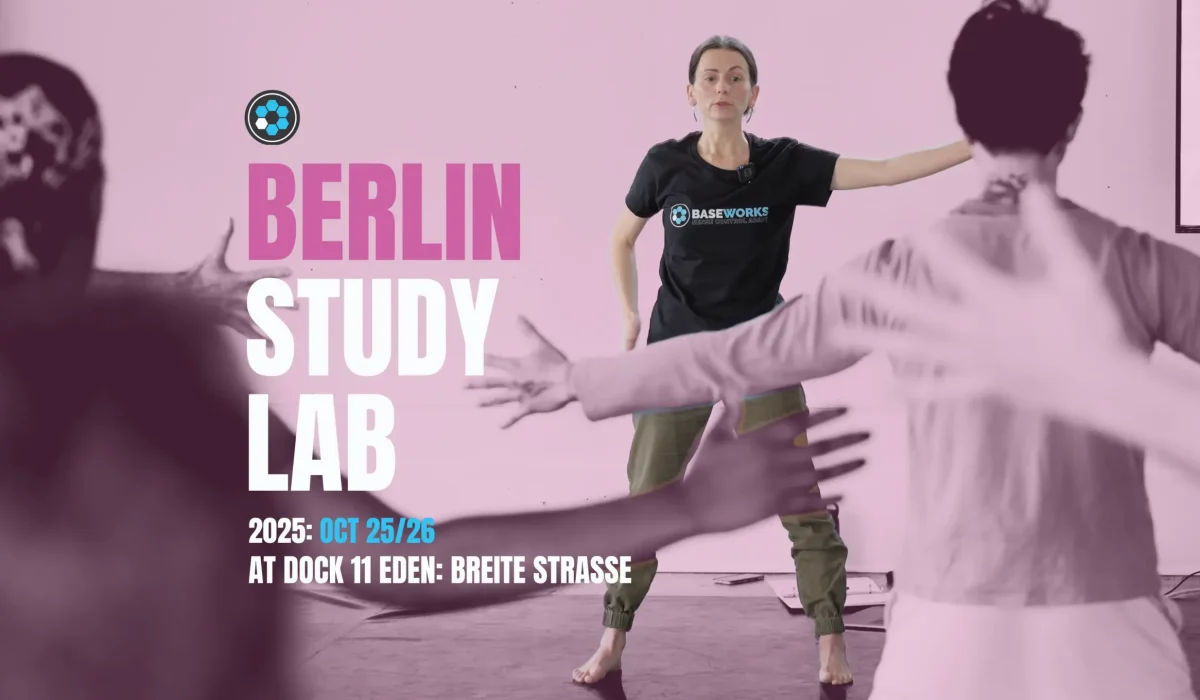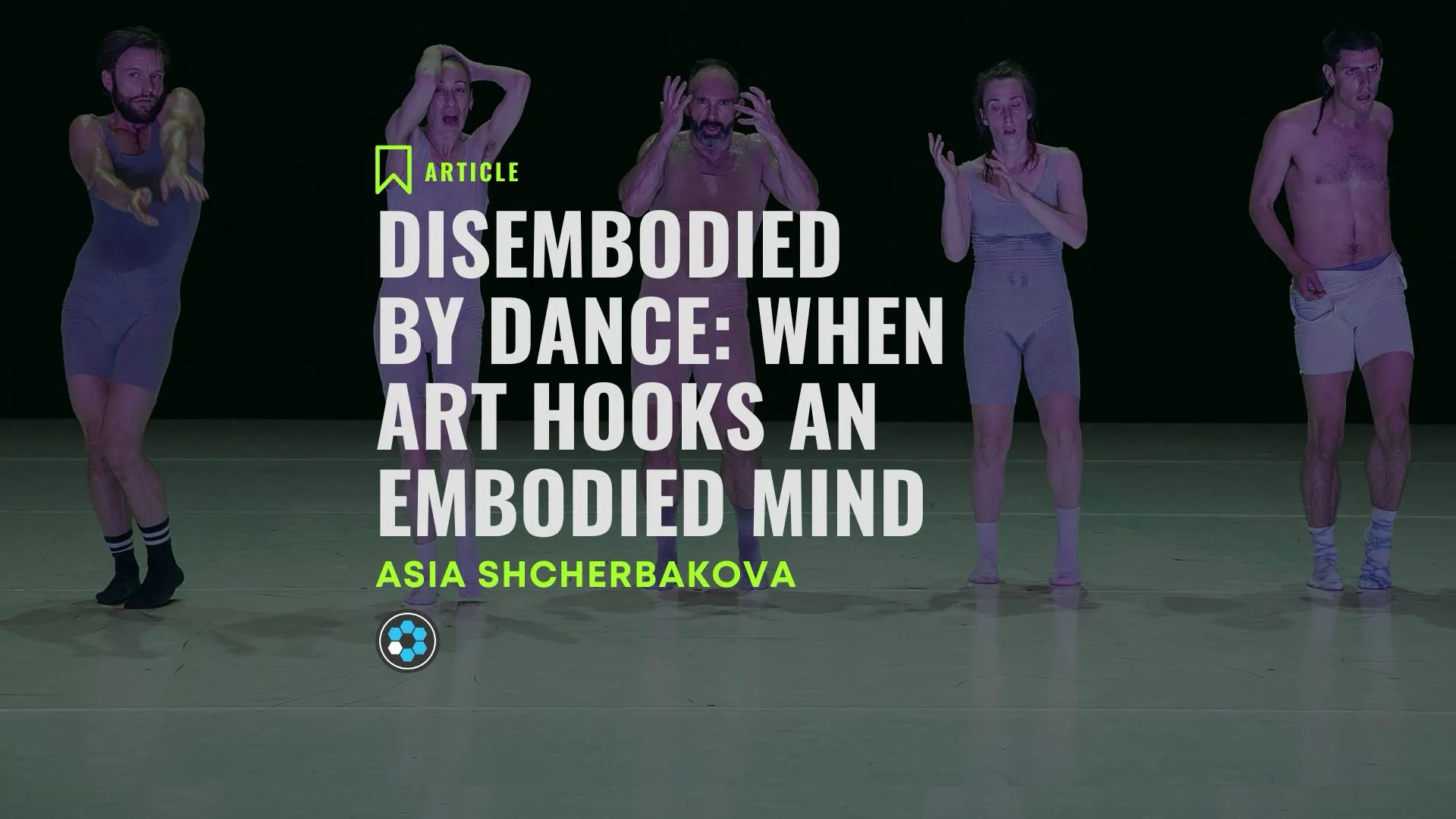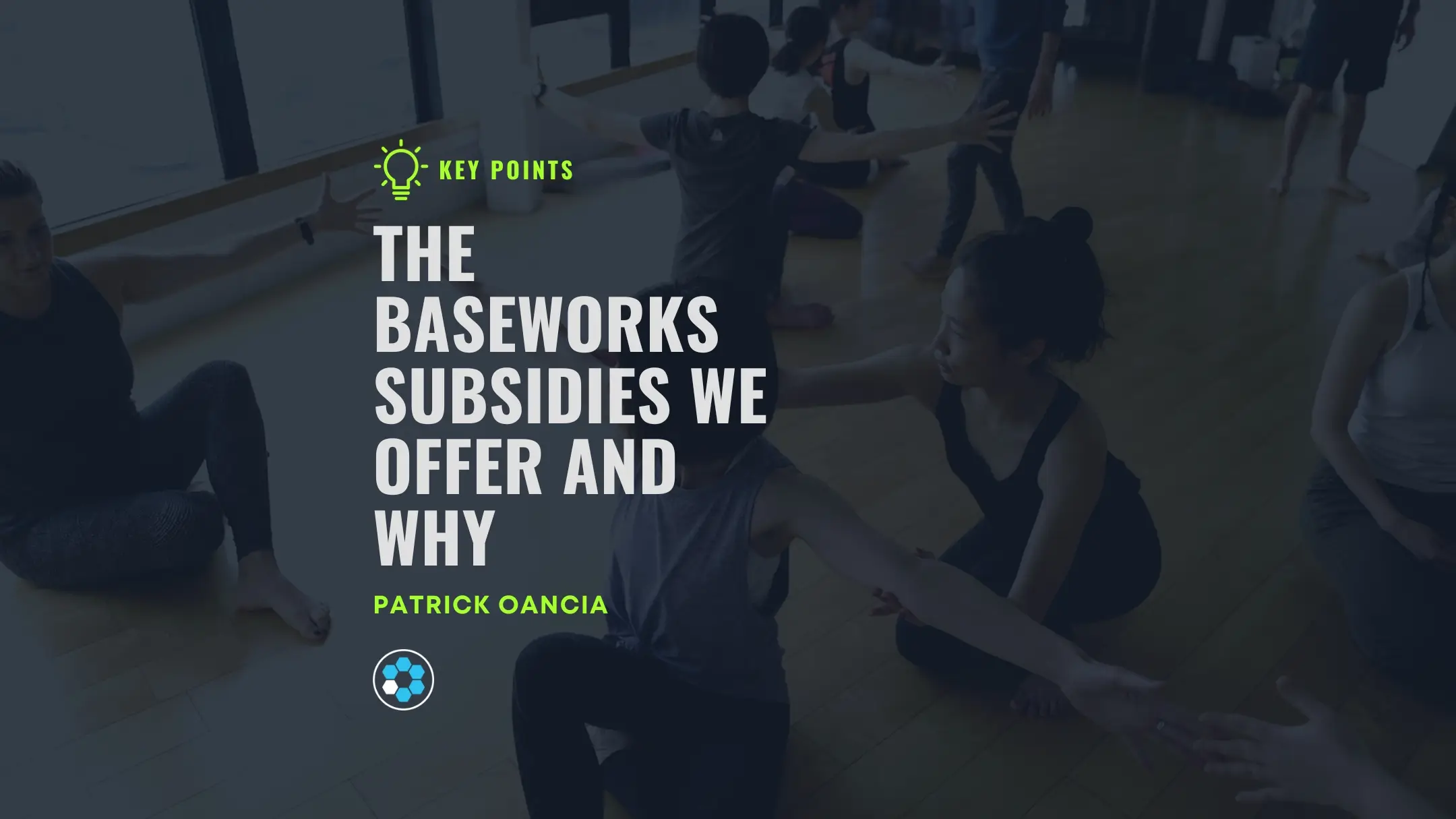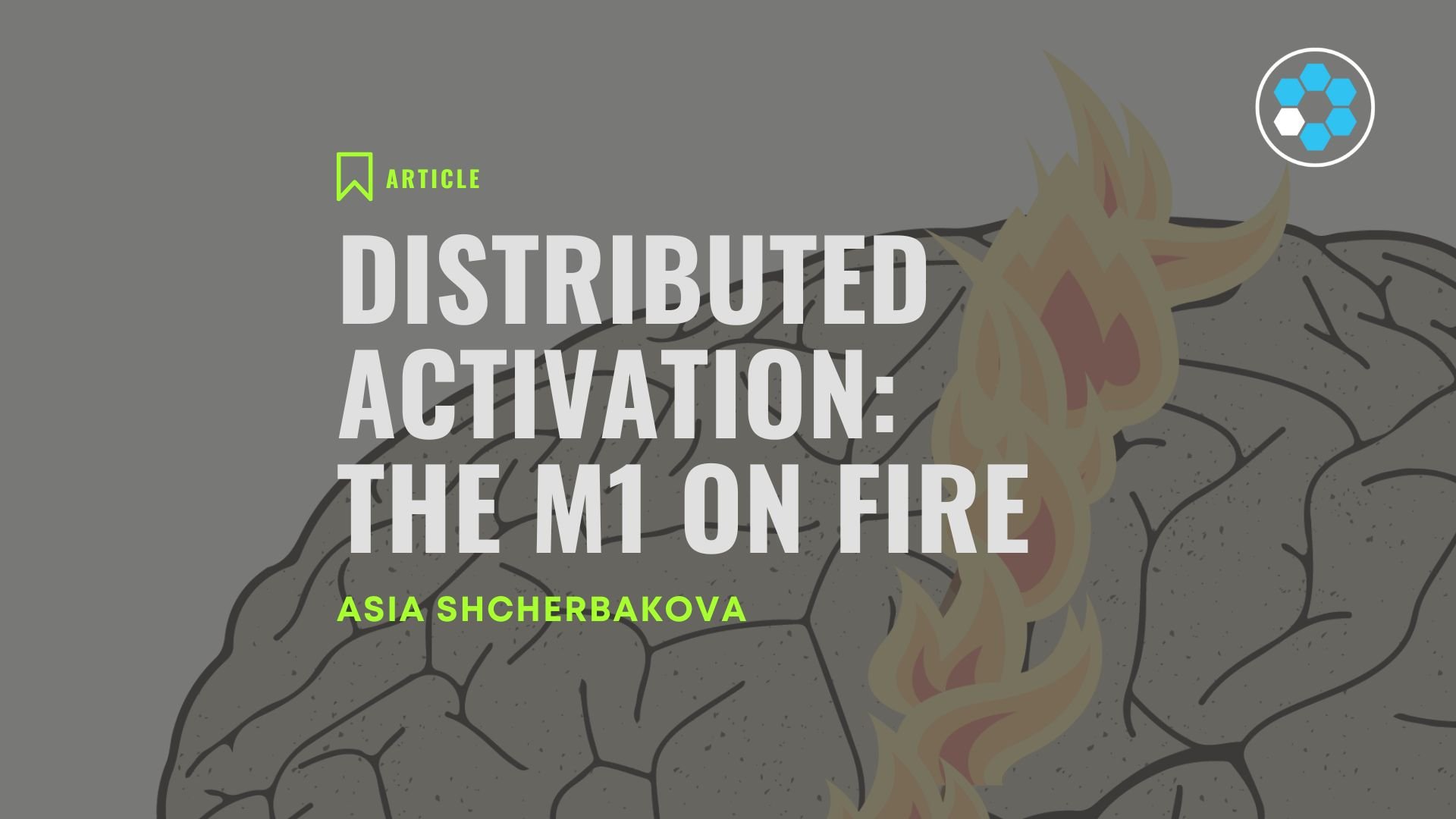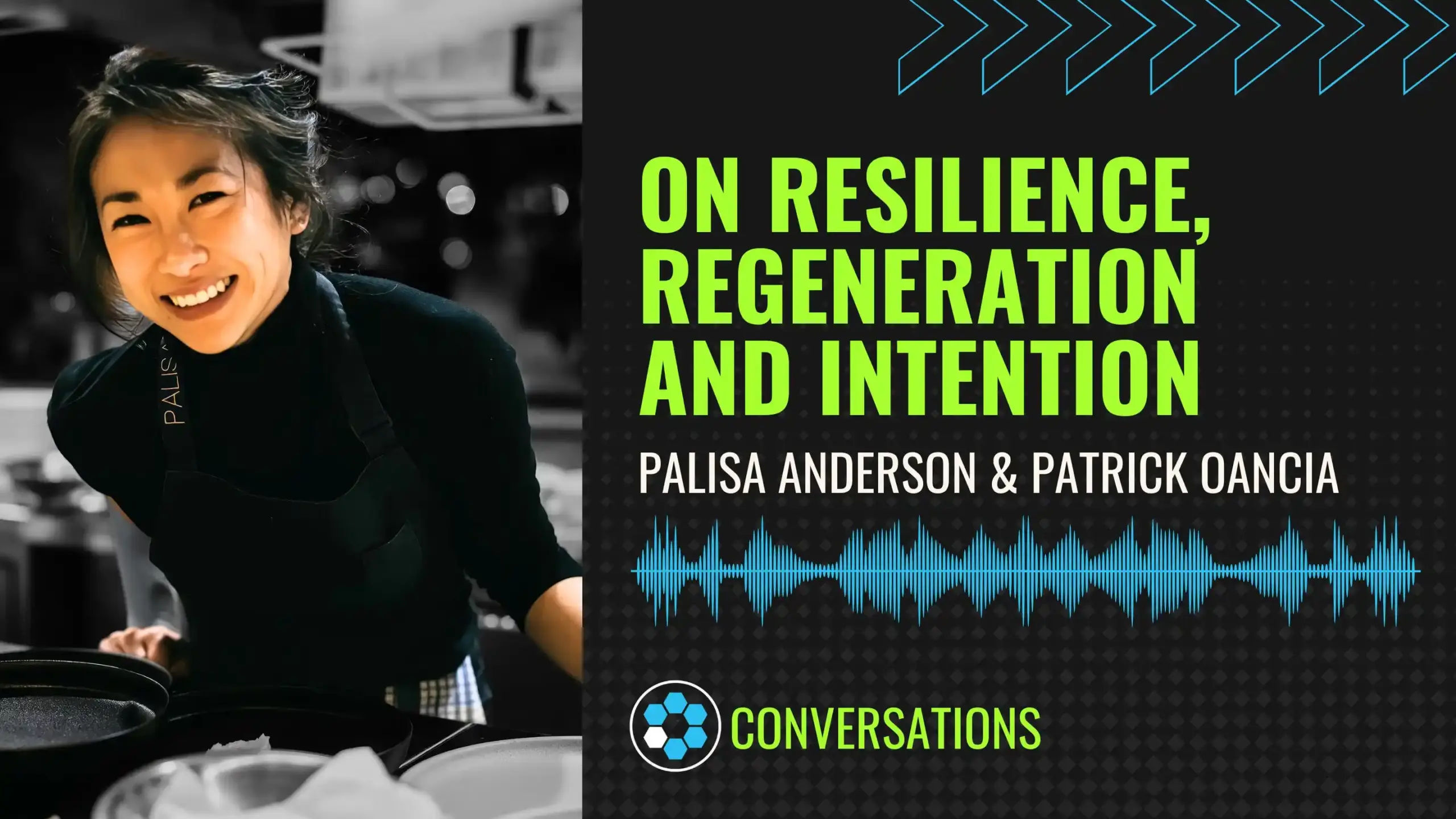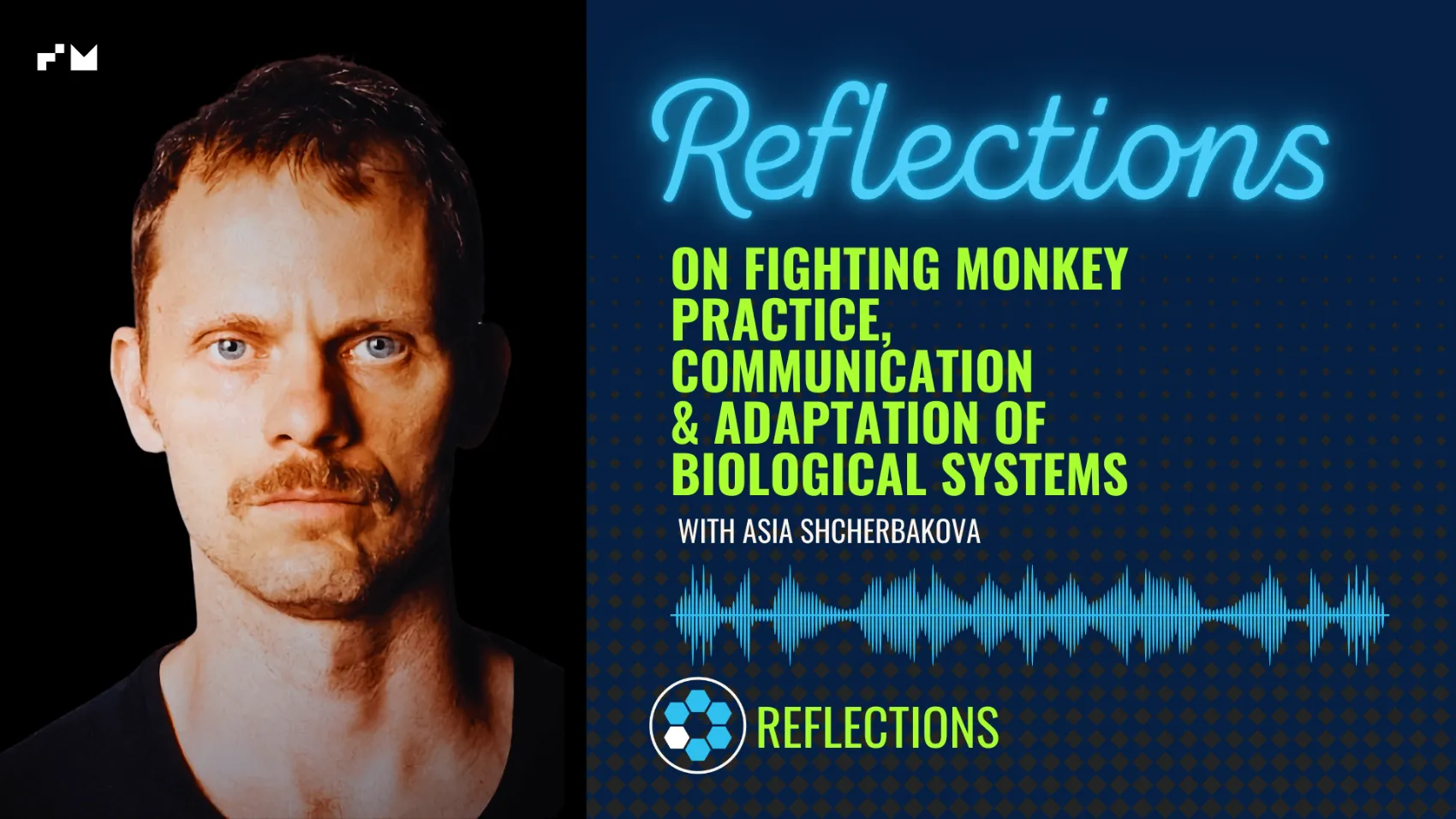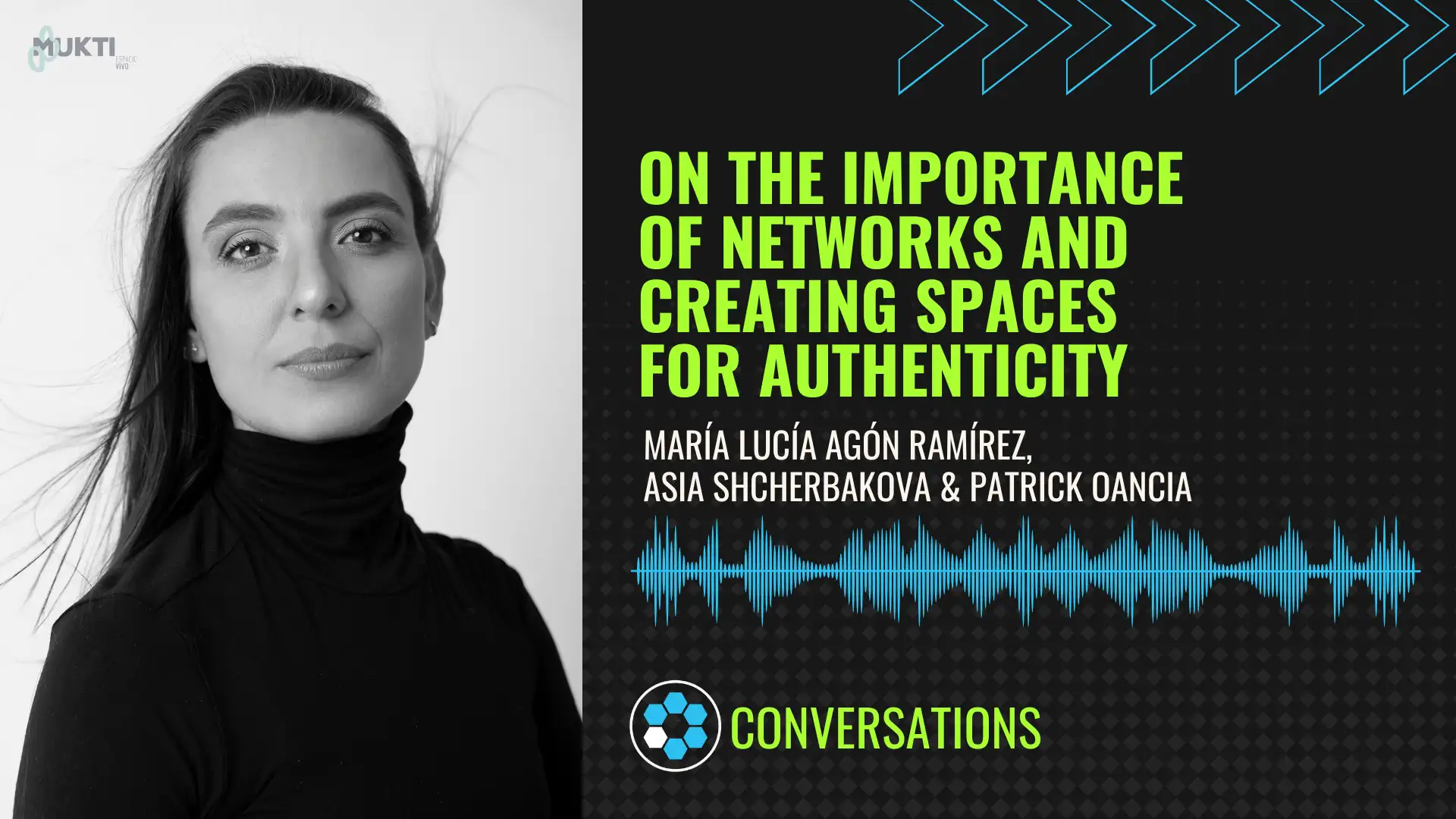Asia Shcherbakova [00:07]:
Hi, my name is Asia Shcherbakova, and I’m a co-developer of the Baseworks Method. And I will be your host for this Transmission Conversation today. The Baseworks Method is an approach to movement and physical practice that has a profound effect on perception and the quality of day-to-day and moment-to-moment experiences. And the Baseworks Transmissions look at both concrete and abstract realizations that come up as a result of commitment to any type of practice or pursuit to achieve life goals. And our goal here is to come up with common vocabulary to better describe these experiences and outcomes.
Asia Shcherbakova [00:47]:
In this Conversation episode, I had the pleasure of speaking with Joanna Calderon, an interdisciplinary researcher, educator and music performer from Colombia. Johanna’s journey began with her studies in cello and music history in her home country before taking her to Amsterdam, where she earned her Master’s degree from the Conservatory of Amsterdam, specializing in early Baroque music. Currently, Johanna is an associate professor and researcher at the Autonomous University of Bucaramanga, where she also leads that transdisciplinarity, culture and politics group. And at the same time she’s also pursuing a doctorate in musicology. She has dedicated her career to interdisciplinary projects that connect musicology, cultural heritage, and promoting peace and reciprocity through music and arts.
Asia Shcherbakova [01:30]:
This episode explores Joanna’s experiences and insights at the intersection of music, physical movement, and self-expression, where the line between daily existence and art becomes blurred. We talked about how shared music production can be used as a medium to rebuild broken ties among people in post-conflict Colombia, and touched upon many other fascinating topics. In this episode, the conversation unfolded in a mixture of English and Spanish. So for our listeners who may not be bilingual, we’ve made fully English and fully Spanish subtitles that are available as captions on the video version of this episode. We highly recommend watching this episode to get the full experience.
Asia Shcherbakova [02:17]:
For everybody watching I would like to explain a little bit about our connection with Joanna, Because a few years ago, she wrote to us, she was interested in the Baseworks Method because it’s a movement method, and in general she’s interested in movement. And we’re going to be talking about that. So we had some communication. That was a few years ago, so we forgot about it. And then this year, when we were organizing workshops in Colombia, in Bucaramanga, we sent her a message, saying, “Johanna, we’re having some workshops, why won’t you come?” And it turned out that she works exactly in the university where we have the workshops. Exactly at the Faculty of Music, where we also had a workshop for students of music. So I’m very happy to have you on this Transmission.
Johanna Calderon [03:06]:
Thank you very much.
Asia Shcherbakova [03:07]:
I will be maybe speaking in a mixture of English and Spanish, and Joanna is going to speek Spanish.
Johanna Calderon [03:13]:
Yes.
Asia Shcherbakova [03:14]:
Johanna, thank you very much for coming, and can you tell us a little bit about who you are? because you are a musician, but you are also a musicologist. So what is it, What is it that you play? What is it that you do? What is it, your profession?
Johanna Calderon [03:31]:
Well. Thank you very much, Asia and Baseworks, for the invitation. I am a cellist. My main instrument is the cello. But because I did my master’s studies in early music in Amsterdam, I also play other ancient instruments like the viola da gamba and the harpsichord. Those are my instruments. And in Colombia, when I can, I do concerts, performing. And as a musicologist, I study and do my PhD in Buenos Aires, Argentina.
Asia Shcherbakova [04:15]:
And why were you interested in “antique music”
Johanna Calderon [04:20]:
Well, early music in Latin America isn’t very well known.
Asia Shcherbakova [04:25]:
It’s really a practice from European countries.
Johanna Calderon [04:28]:
That’s why I went to Amsterdam. Because the Netherlands is a very important power in early music, in teaching the practice of early music. And it’s a musical repertoire that I love. I’m fascinated by early music. It also has to do with language, with the language. It has ways, musical gestures that are unique and very particular to early music. We’re talking from the Middle Ages or the Renaissance until approximately the 17th century, and it extends a bit further.
Asia Shcherbakova [05:12]:
I think there’s a lot of ancient music in Colombia as well. Would that be correct?
Johanna Calderon [05:22]:
Yes, yes it is. We can trace early music back from the 16th century. And in Colombia, we have an archive that is the oldest of colonial music. Or one of the oldest in all of Latin America, including Central America and Mexico. And this archive preserves scores from the 16th century. And it’s in the cathedral. In a cathedral, the most important cathedral in Bogotá.
Asia Shcherbakova [05:49]:
So you are performing music, but you are also studying the history of music?
Johanna Calderon [05:55]:
Absolutely, yes.
Asia Shcherbakova [05:59]:
What makes you interested in the history of music? How does it supplement your perception of music or your performance of music?
Johanna Calderon [06:11]:
I believe that history is not only something that happened in the past, but it becomes very important when you interpret those past events and bring them to the present. They gain greater importance there, because if you study history and bring it to your present, you can understand where certain musical elements, certain musical practices come from. Then you can better understand what’s happening today from studying the past. Let’s put it that way.
Asia Shcherbakova [06:49]:
Interesting! So, because we are here in Colombia and we’re speaking Spanish here, and some of the workshops we are doing here, we’re doing partially with interpretation. One thing that I noticed in this process that I think is very relevant to our talk today is that, the word “performance” as for example “musical performance,” to translate it in Spanish, we would use the word “interpretacion” which sounds like English word “interpretation” but it doesn’t mean the same. So, “interpretation” in English can mean “translation,” like linguistic translation from one language to another. But in Spanish, “interpretacion” is “performance” like artistic performance. But there is a very big difference in the word “performance” and “interpretacion” (Interpretation). And the word “interpretation” sounds more like it requires more from the person who is doing this interpretation. So they interpret the work, right? And I guess there is maybe an element that let’s say I have a music sheet, right? And maybe when I’m performing it, I’m not doing it exactly like the composer. So that’s maybe one, side of it. But the other side, as for example, as you were just saying that by studying the history of music, it changes how we… how we “understand,” how we perceive and understand music as well, right? And this is also a very big part of this interpretation.
Johanna Calderon [08:22]:
Absolutely. We can define performance as the act, not just the interpretation of an instrument but the whole experience. So this is what I experienced in a project that I will later discuss with you And it’s like going deeper into the experience of performance. Performance has many elements. There is an element of preparation with your instrument, but there is another element of communication with the audience. So what I’ve been studying in recent years is more than an playing a concert or a recital. It’s trying to have an immersive experience psychologically speaking, both for the audience and for me as a performer. I think there’s an important difference there between the words musical “interpretation” and musical “performance.”
Asia Shcherbakova [09:27]:
Yes. Yes. Totally. And also this element of communication… I’m sure that many musicians, many artists, they would also (who are not Spanish speakers) they would also talk about the connection that they have with the audience. But somehow this, this word, “interpretation,” it’s almost like when you are trying to “translate” something. And we translate, we translate it to another person so that another person understands us, right?
Johanna Calderon [09:58]:
Perhaps we can understand interpretation as the first step, you know, your are just beginning on your career as a musician. The first step is just to read. And then perhaps just to read out loud. And then to perform. But it comes with the years and with experience of life. You cannot replace that.
Asia Shcherbakova [10:20]:
We wanted to talk about the work that you did, related to the interpretation of the work by a Colombian composer, Blas Emilio Atehortúa, Right? And, we’re going to put a video in the show notes so that everybody can see what we’re talking about. But I would like you to talk a little bit about that work. And, why was it important to include physical movements in that particular performance? And also, I know that you are currently writing a thesis about the life and work of this composer. So, yes, if you can add a little bit more about that, that would be very interesting
Johanna Calderon [11:05]:
Well, this project started from my interest and that of a pianist colleague in the work of perhaps the most important Colombian composer of the 20th century. He is a very recognized composer both in Colombia, the United States, and throughout Latin America. He composed four works for cello and piano – Chamber Music. So we started working with my colleague looking for that idea of performance. Of immersion. Not just doing a concert, a little cold, playing the pieces, and clapping at the end. But we wanted to go a bit further in our lives, too, as human beings, so that the musical work touched us deeply. So my pianist colleague decided to recite texts where he expressed his life experiences, some traumatic, with the piano. And what I decided to do was to… “transladar” (transfer). It’s a bit difficult to explain even in Spanish, but after interpreting or transferring some gestures that are present in the music and turning them into movement. So in the final performance, I performed a series of movements that are almost ritual movements between each of the works. And there, with my body, I express the gestures that are in the music. So it was a whole process of experimentation with eight basic qualities of movement. One of them, for example, is to strike. Yes. So the idea was to experiment with these qualities and bring them to the music. That’s more or less the general idea of the project.
Asia Shcherbakova [13:25]:
Do you think that the audience can see the connections between the gestures of music and the physical gestures that you are doing?
Johanna Calderon [13:38]:
Yes, I think they were able to find a clear connection between bodily movements and the music. But beyond seeking that perception from the audience, the most important thing was the immersion space, psychologically as well. What do I mean? If, if we see the music, the score, we see, for example, that the composer placed a dynamic, for example, pianoforte. How to do that with your body? That’s the question: how to do that? So the experiment was not only to see the score, but to try to find the movement without the instrument, but experienced only with the body. And in this way, I am sure that the effect, that he wanted, that the composer wanted, really could reach the audience. It’s a very, very fine work of many very complex elements. I don’t think I covered all, all, all the deep meaning of the pieces, It’s almost impossible. And I don’t think the audience has taken in everything. But I think the overall impression of the experience was received very positively.
Asia Shcherbakova [15:19]:
End when you yourself listen to music, do you somehow in your body translate the gestures of music into body movements?
Johanna Calderon [15:29]:
Yes. I think if I’m listening to music, I can feel it in my body, in my skin sometimes. And then I have this kind of need to just get up and dance. And sometimes it happens to me. I need the movement to understand music. It’s something that I’ve been learning from myself that I need to move. Really, it’s a need. In order to understand what the music means.
Asia Shcherbakova [16:04]:
What kind of movement practices are you doing?
Johanna Calderon [16:08]:
At this moment, I’m doing yoga. I don’t have a lot of time. Because I’m working with many other projects. I reduce all my practices, my practices of movement, to yoga. Because it’s the only thing I can do during the day and every day. So I at least I keep that.
Asia Shcherbakova [16:29]:
In the past, what else have you done?
Johanna Calderon [16:30]:
Well, in the past I practiced tai-chi. And in fact I have, such a wonderful teacher in in Amsterdam. He’s a percussion player, but he’s also practiced kung fu, during his youth. And, I practiced every day with him, for two and a half years. That was one of the most beautiful experiences of my life. Really. Yeah. But then I came back to to Colombia, and I finished that practice.
Asia Shcherbakova [17:06]:
So you mentioned something about “what the music means.” What, music signifies or what it means. I’d like to ask about, how you feel it It changes your perception of music when you formally learn the structure of music.
Johanna Calderon [17:27]:
I think when I learned the structure of the music, I see it something that I’ve learned many years ago, so I’m in another stage, I don’t know how to explain it well, but that’s already past. Like the basics of music, the structure. But that has been changing over time. My way of learning has been changing. So now I learn more with the body, try to understand more with my body. So I try to understand a musical structure of a work from my mind. And then just it goes straight to my body. Through dance, or yoga, or tai-chi, or whatever, or just walking through the city.
Asia Shcherbakova [18:27]:
So because you have studied music for so long, I guess for you, the perception of the structures in music, it’s your second nature right now. So what you focus more, what’s more important for you at this moment is to interpret music through your body. This is where you are at this moment.
Johanna Calderon [18:46]:
Absolutely.
Asia Shcherbakova [18:47]:
So one of the reasons why I’m asking this is because my mother sometimes… So my mother really likes classical music, but sometimes she tells me about her experience with some friends from an orchestra, and she has this fear that if you learn to understand music formally, somehow you will lose the perception of its totality, that is going to all break apart, and it’s not going to be beautiful anymore. And what’s also interesting is that in Baseworks, sometimes, when we talk about this decomposition of movements and learning to be more conscious about various elements of movements, a few people, including dancers, asked me, “Don’t you think that if you do too much, you won’t be able to move holistically, somehow?” Do you have anything to comment about that fear? That learning about the elements will somehow just completely destroy the beauty of the entire thing?
Johanna Calderon [19:49]:
It’s very difficult to explain. Because that’s is like to talk about magic or something like that. That is it lies very deep in music. I’ll tell a story. A few years ago I did a practice that is led by an Argentine psychologist. It’s a method of psychology and it has a very strong, very powerful corporeality component. So the theory is that the traumas you have experienced in your life, but also other things that are not traumas, they remain in your body. So, in order to heal, you need to reach those parts of your body where the traumas are stuck there. It’s just an image of the body. It’s just the imagination. I don’t know how it works but it works. Even if you have a very deep trauma, it is in your body. For some people the trauma is so deep that even if the person goes to a psychotherapist every day, the life is not the same. It’s so deep. For example, victims of the conflict in Colombia. Their families were assassinated, for example, in front of their eyes. I mean, you cannot forget that. Just the impression in your mind, and the trauma in your body… Then in this body practice, you listen to music and let the music move your body in the way you want. And you give way to your emotions through body movement and also the voice. It’s an essential component of that practice, of that psychological therapy. So I think the body is an extraordinary mechanism. And everything passes through our body. I don’t know if I answered your question, but I wanted to bring that experience because it is very powerful, and when you let yourself be carried by the music it’s truly healing from the trauma you have. In the results, for the improvement of the person’s life, you can see them almost immediately, like in Baseworks, where you make a small movement and everything changes. And the person feels better. I think that would be the connection with what you were asking me.
Asia Shcherbakova [22:59]:
So the music somehow helps to find a way out for the tension that the person feels.
Johanna Calderon [23:08]:
Absolutely. I believe, I believe in that. I don’t know, for the professional musicians, you know. For example, the musicians or the person who works every for an symphonic orchestra. I’m not there anymore. I just quit from that environment. The orchestra is not for for me, for my body. I don’t know how to explain it. I think they work with an orchestra so hard. It’s incredibly hard. And, perhaps this musician for example, a violin player in a professional, very famous orchestra… I don’t know his state of mental health. I don’t know if he’s taking pills or whatever for, I don’t know, nervousness or something like that. I think I’m in a very nice moment of my life. I’m free from that. So I’m very lucky. I’m very lucky. I’m doing what exactly what I would like to do at this moment of my life.
Asia Shcherbakova [24:24]:
And have you played in an orchestra?
Johanna Calderon [24:26]:
Yes. Yes, here, and many years, many years ago. And yeah, that’s not my practice. That’s not for me. I have to confess because, well, it’s because in a way, it’s a way of living, I respect that, yes. But for me, it’s extremely hard just to be there for hours and hours without the possibility of movement. And it’s like a prison for me. But for other people, it’s just heaven. I don’t know, it depends.
Asia Shcherbakova [25:01]:
You know, when we were preparing for these workshops for the music students, we had to, you know, look through a research, about the physical problems that musicians have. And it turns out that among musicians, sometimes 94% of professional musicians, they have pain and tension and some really, really high percentage, they have to seek medical help because of that. And also while we were talking to the musicians in the workshop and after the workshop, they’re all saying that we’re working with the body, so it’s interesting that we somehow focus sometimes too much on that technique, and we, in a way, ignore the body. So we talked to people and we saw how, yeah, they have tension, you know, all over. But at the same time we have another situation where we can use music in order to let certain things out. But also it’s a very different approach to using music, right? Because when you are in a symphonic orchestra, you cannot just allow yourself to just do whatever you want when you hear music, right? You’re like a cog in a machine, right? And you have a conductor. And essentially you have to become… I don’t know, in a way, in a way it’s like a linguistic interpretation where you have to kind of let go of your ego and you have to become a small part of a big hole. Right? And, this entire thing is working, you know, to create something big. But, you know, it can be taxing on the body.
Johanna Calderon [26:31]:
Absolutely. Especially the rehearsals. I think that’s like hell. You know, I think that the body is the place where you can go through hell or you can go to heaven. Because the body hurts, you know? You can have an injury. I have an injury here from my practice. And they have to understand that and to live with that, you know? But the pleasure of life is also through the body, you know. It’s like the place where your spirit is going through all those processes, too, you cannot ignore your body. And I’m also telling my students, please don’t ignore what you are feeling. I mean, you are not a robot or a stone or whatever You have to listen to your body, whatever the body tells to you, okay? And sometimes the body tells, look, I’m just feeling really bad. I just want to sleep. Just go to sleep. Don’t go to work or do many other things to just to escape what the body’s telling you. For example, the emotions. If you are feeling sad, you are sad. You cannot go over that. You are doing really a very bad thing when you are not honest with your body and your feelings and you just start lying to yourself and automatically to other people. You know, if you know, you are not able to connect with your body.
Asia Shcherbakova [28:16]:
So hearing, hearing, how you speak about the tension of the trauma and about the importance of connecting with the body, I want to ask you about the work that you do in relation to music in relation to… music, in relation to the armed conflict in Colombia, and also the projects that you have right now where you’re trying to use music for peace. So can you please tell us a little bit more about that? So if you’ve resonated so far with any of the topics discussed, please consider sharing it with others and clicking the like button. This is really going to help more people find it and support all the efforts that go into this production. You’ve been here to check out this episode today is a massive contribution toward the sharing of ideas that unfold in these talks, and thank you very much for your support. And subscribe to get real time notifications about all upcoming episodes.
Johanna Calderon [29:11]:
You might know that Colombia has experienced a conflict that perhaps is the longest on the planet. It’s an internal armed conflict, not with other countries, it’s among ourselves. So this conflict has lasted about 60 years. Several generations have lived the consequences of that. It has reached very high levels of violence, and at this moment we are in a post-conflict stage in a large-scale conflict. So many people are working to provide options from what we know, to help build a network, connections between people that were lost, that were damaged. Yes? So, at this moment, I am working thinking of some options to work with both victims and those who caused that harm. Those are very serious, very, very, very serious damages. They’re not small things. But rather very… Very big damages over people and communities. So the idea is through the art of music, to create spaces where people can meet and seek answers to what happened. We can heal, but if we don’t heal, it’s not a problem, the damage that has been done and the pain is too strong. So, at this moment, I am working thinking of artistic alternatives to create these spaces of coexistence, of being together despite everything that has happened. It’s complicated.
Asia Shcherbakova [31:26]:
It sounds very interesting. Can you be more specific about what type of music is used in such spaces and how exactly.
Johanna Calderon [31:38]:
Well, the center of everything is a very large model of justice. It says that we have to work with what people know. So, if a person doesn’t know the violin or the piano, I have to look for other tools based on what people know. Not bringing something external and trying to impose it by force, but we work with what people tell us and adapt. Then there are certain types of music maybe not in classical music as such, European, but in music that is made in the territory where we are working.
Asia Shcherbakova [32:33]:
But are people listening to music or are they actually taking instruments and they are performing music?
Johanna Calderon [32:40]:
It can be both. It can be both. It can be like teaching or the practice, or just taking contact with an instrument and just speaking with other people. The music is not the center, you know, it’s the experience with the people. Just just meeting in that space and the the excuse is art or music, but the main purpose of the activity is just to create again the links between the people that were damaged.
Asia Shcherbakova [33:17]:
So if they are, for example, playing instruments, does it mean that they will try to play music together?
Johanna Calderon [33:23]:
Yeah, exactly. That can be an option.
Asia Shcherbakova [33:27]:
So it’s not that for example, they’re listening to a certain type of melody that appeals to certain types of emotions, but rather the activity of trying to, for example, make music together is what rebuilds the connection.
Johanna Calderon [33:41]:
Exactly, exactly. It’s just to be together in one space. Because it’s very difficult just to be with the person who did such bad things. I mean, it’s complicated, but at this moment, many groups of victims, they have been working with psychotherapists. And they are really prepared. They have really organized. They know perfectly their rights and they know the limits of everything. And most of them, they don’t want just to forget things, even they don’t want to forgive, but they are aware that that’s the only option for this country. You know, we we cannot continue just killing each other. That’s that’s the reality.
Asia Shcherbakova [34:28]:
So, in relation to connections between people in the society, I want to ask you something. We went to an exhibition in Montreal a few months ago, which was dedicated to Colombian art of people of… Arhuaca?
Johanna Calderon [34:47]:
Arhuacos.
Asia Shcherbakova [34:48]:
Somewhere in the Sierra Nevada de Santa Marta, right? And this, exhibition was an exhibition of certain sacred objects that were taken from those people. And there were some videos and additional lectures which were explaining sort of the philosophy of these people. And first of all, the they have these music instruments called ocarinas, right? Yeah. Which look like animals or birds. And when they play those instruments, their belief is that they reproduce the sound of nature. So there is a very, very great interconnectedness with the nature. And at the same time, also another part of the philosophy, is that, for example, when they take something from nature, let’s say they take clay in order to make a pot, that they’re going to use in their household, they feel like because they’re taking it from nature, they need to thank it somehow or ask permission. And so they have rituals about that. And so there’s this very important sense of interconnectedness with nature and also among people. And these people of Arhuaco, when they were collaborating with the museums in order to organize those exhibitions, what they were seeing is that they feel it’s very important to spread this philosophy to the world because they feel that’s very important. And I was just wondering just how and how widespread is this philosophy in Colombia, whether everybody shares that. Do you have the same, for example, in a city like Bucaramanga.
Johanna Calderon [36:26]:
In Colombia, there are still many indigenous communities. If you compare with Latin American countries where they have been totally wiped out, in Colombia we still have them. They have a great sense of connection with nature, still, still. But they are far from the cities. Colombia is really big, and there are very unexplored territories, particularly south of Colombia. When you go to the Amazon, it is forest. These are very unexplored areas. So our connection in the cities with people in the forest or in unknown territories of the country is very little. In the city, you don’t have that much connection with nature. Now, at this moment in Colombia, we know a little bit better about the communities and their traditions, you know. But for many years they were just rejected. And that was really painful. And the Arhuaco community in the Sierra Nevada that they are a lot of other communities. And now we know that they suffer immensely with the conflict and were killed, and especially the connection with nature was really… the conflict changed everything. So, for example, if one, one person killed another and the bodies on the surface of the earth, the mother nature suffers and that blood contaminates the territory. it is amazing. And it’s just, it’s just amazing how they connect everything with nature. And the Mother Nature is everything for them. I mean, for us, you know. So at this moment that those communities are working in the process of their the post-conflict… and those communities, they got just, like, injured by the conflict. So they are really apart from other people. And it’s true that if they take something from nature, they have to do something in return. I mean, that’s fair, no? And they are really worried about deforestation because that’s the reality in Colombia. The mines and all the oil extraction. Yeah, Colombia has a lot of natural resources. But that’s also killing the the territory. You know, the extraction and deforestation of the territories is killing Colombia. That’s, that’s really that we are working on right now, just to be aware what is happening with nature in Colombia.
Asia Shcherbakova [39:39]:
And, the community… Is community important amongst families? Like, where would you find the strongest sense of community in Colombia?
Johanna Calderon [39:48]:
I think in family. In family. And in some regions in Colombia it’s really crazy. Yeah. And for the indigenous communities, the sense of not family, but there is the other structure that is in Spanish is “clan” That is this very tight bond. Yes. Clans.
Asia Shcherbakova [40:12]:
Clans. Exactly.
Johanna Calderon [40:14]:
And they have that. But in general in Colombia we can talk about family. Yeah. Family is important for us. And, are you planning to stay in Colombia?
Asia Shcherbakova [40:27]:
I don’t know, yeah, I don’t know.
Johanna Calderon [40:31]:
We’ll see. I’m just trying to finish my thesis dissertation in two years, and we’ll see. Yeah, I would I would like to go south. I love south, Chile and Argentina. I love those countries. I really feel very good when I see those countries. And I would like to spend some time there. A couple of years, perhaps. Just doing something professionally with music? Or just being in nature?
Johanna Calderon [41:09]:
I think perhaps I can work there for short periods, but we’ll see.
Asia Shcherbakova [41:20]:
And, in relation to… So you mentioned that you do not want to be in an orchestra at this time of your life. But what about creative projects? Yeah, I would love that.
Johanna Calderon [41:25]:
At this moment I’m working with, Dance Company, a dance company here in Bucaramanga. And it’s just fantastic. I love that. I can spend hours and hours and hours there.
Asia Shcherbakova [41:40]:
So are you dancing or are you….
Johanna Calderon [41:42]:
Dancing, acting and playing. So it’s everything at the same time and the interactions with other dancers. And yes, it’s fantastic. And I can improvise music that is very good. I like that very much. And more in that direction rather than in the orchestra, an organized institution.
Asia Shcherbakova [42:04]:
Do you think that working with your body somehow helps music improvisation?
Johanna Calderon [42:13]:
Yeah, I think so.
Asia Shcherbakova [42:14]:
Let’s say if I were to look at you while you improvise, is it more happening in your head or is it happening in your body? What the act of improvization… could you describe the feeling of music improvisation the way it happens to you?
Johanna Calderon [42:35]:
Yeah, I’m just talking with you and I feel, I feel it. I don’t know if I’m a little bit kinesthetic, but I can just feel it in my body. I don’t know how to explain it. Perhaps you will explain that to me better. But for Improvisation, you can do many things. Not just playing, you know. That’s the classical idea of improvisation that you can’t only do it with your instrument. But you have a body, and the body sounds too. And you can move with your body. And you can improvise movements too, with your body, not just with the instrument. So I discovered that and that was really great.
Asia Shcherbakova [43:19]:
Do you also do dance improvisation?
Johanna Calderon [43:21]:
Yeah… (with a very reluctant intonation)
Asia Shcherbakova [43:23]:
Why are you saying it like that?
Johanna Calderon [43:25]:
At home.
Asia Shcherbakova [43:27]:
Why at home?
Johanna Calderon [43:27]:
I just put music and that’s everything. I just go with the flow of music and that helps me a lot. Yeah. And I think that’s improvisation.
Johanna Calderon [43:45]:
Because I think that in certain moments in your life you have to transform your life in art. So it’s better if everything in your life, it’s not about harmony. You can have conflict in your life. Absolutely. And you have to deal with that with other people. Different opinions. But in your body, your body can be also art. When you are breathing. Or you are walking, you can walk in different ways, But as soon as you are conscious of what you are doing, you can do art in every moment of your life. With your voice, with your movements. So when you eat, when you are eating something, and it’s delicious or it is horrible, I mean, that’s art too. So I believe in that. That in certain moments your life becomes art But it’s a process.
Asia Shcherbakova [44:44]:
You know, I really resonate with what you are seeing right now about how your life and the simplest movements become art. And we were talking about it, for example, during the conference, how developing spatial awareness just makes your experience – moment-to-moment experience an aesthetic process, right? But hearing what you are seeing right now, I’m wondering first of all, when you are saying that your life becomes art and you give an example of eating, that eating becomes art, right? It’s not the type of art that you are doing for another person, right?
Johanna Calderon [45:22]:
Exactly.
Asia Shcherbakova [45:23]:
Like, it’s not… we are not talking about this process of interpretation to transmit certain information to another person. We’re talking about it for yourself. Your enjoy it for yourself.
Johanna Calderon [45:36]:
Absolutely. Exactly. It’s the moment of your life when everything becomes like there’s coherence.
Asia Shcherbakova [45:42]:
Coherence, yes.
Johanna Calderon [45:43]:
In your life. Even the slightest thing in your life. I mean, it’s not apart or something really chaotic or whatever. So everything becomes somehow interconnected. Interconnected, and it goes with this central line of your life. I don’t know how to explain that, but but that’s the image.
Asia Shcherbakova [46:03]:
And do you think it happens to everybody? And do you think it’s a phase in life that happens to everybody, or is it something that you need to look for in order for it to happen?
Johanna Calderon [46:15]:
Wow. That’s difficult because anyway, you need to learn how to do it. And right now at this moment, I think we have a lot of tools, you know, to develop that consciousness and perception and to be more aware, and not just, you know, the cell phone. Not that. But we have the science of yoga. We have Baseworks. We have tai-chi, almost everywhere. That’s just that’s really amazing. So you have the tools. Okay. So you have to go to the class, the yoga class, and do the class That’s an option that is conscious, you know? Perhaps if you go every day and you do this kind of process, you will find this harmony in your life, perhaps.
Asia Shcherbakova [47:18]:
Coherence.
Johanna Calderon [47:19]:
This coherence.
Asia Shcherbakova [47:20]:
So it’s not a harmony in a way that it’s a very balanced state where you’re in peace…
Johanna Calderon [47:26]:
No. but it’s more of, artistic expression. That coherence that for you is aesthetically right.
Asia Shcherbakova [47:34]:
Aesthetically right for you. Great. So you as a musician… How many years have you been as a musician?
Johanna Calderon [47:42]:
Like, I don’t know, I’m 45. Let’s see. 40?
Asia Shcherbakova [47:47]:
Okay. So for, what is it, 80? 80% of your life you’ve been a musician. But what I hear right now, when you give…. So you say, “there are tools that you can use in order to find this coherence.” But the tools that you mentioned, they aren’t movement tools.
Johanna Calderon [48:05]:
Yeah, exactly.
Asia Shcherbakova [48:08]:
And by the way, by the way, it’s not staged at all. Yeah. I was not expecting Johanna to say that. But I’m just it’s very, very interesting for me to hear that. Because you are a musician, right. So you study the technique and you work with public performances, so you are an artistic person. But then at this moment of your life, somehow, conscious movement is what you find brings the coherence in your life.
Johanna Calderon [48:36]:
Absolutely. Yeah. What if we look at the world as a stage.
Asia Shcherbakova [48:45]:
A world as a stage where you are the main character?
Johanna Calderon [48:50]:
Yeah, exactly. You are performing something. You are always performing. Always. Well, perhaps not when you are really sleeping. Really in this deep state of sleep.
Asia Shcherbakova [48:58]:
How would you say it in Spanish? if you were to say that, okay, “I am on the stage and I’m always performing.” How would you say that in Spanish?
Johanna Calderon [49:05]:
“Estoy en el mundo y estoy actuando.”
( I am in the world and I am acting/actualizing)”
Asia Shcherbakova [49:09]:
“Actuando”, okay. So you’re actually “acting,” so you are “acting out,” right? And you are looking for a coherence where your actions and perceptions, they become completely coherent, like a work of art.
Johanna Calderon [49:26]:
Well, yeah, that’s my theory. I don’t know. But I don’t know. I cannot disconnect parts of my life. If I am coherent, I cannot experience an imbalance. How can I experience conflict with one person? That’s not coherence. I have to work on that. You know? In order to be aesthetically correct for myself. It is like to be in every space of your life and to be just checking what is happening, you know. But, but it’s not… the life is not separate. It’s everything is connected completely.
Asia Shcherbakova [50:08]:
I’m specifically interested in what you described as a constant state of art when your physical experience becomes essentially a process, an artistic process, right? A performance for yourself. Right? And so this coherence. right? So do you sometimes talk to other people who say, “Oh, yes, I feel exactly the same.”
Johanna Calderon [50:33]:
I don’t know. Well, sometimes, you know… I was talking recently with a colleague, but he’s a historian, and we were talking about that. How to make life like an expression of art. But he was talking up from a historian’s perspective. And I was talking about how music can do that, you know? And I was talking from the artistic perspective. And it was the same. I was the same. He’s also a poet. So he has this kind of, I don’t know how to explain it. It is easy for him to connect with art, but he’s an historian.
Asia Shcherbakova [51:20]:
And what… How was he talking about it? How does his work in history translate into his experience being in art?
Johanna Calderon [51:29]:
He told me that he was working for a project for the University and they are trying to decide on the general perspective of the university and what they want from the students. So he was just doing this, writing this text and he just connect that – life and art. And it was really amazing. The text was really complex, But it was but it was very interesting, that connection. And I think it will work. Because before, our university, they talk about harmony. Harmony. How to make your life in a harmonic way. And life is not like this. So it was like, what is that? So now they are working on this definition, this general definition for the students. It’s like the general guidelines for the purpose of the university in society. and especially in relation with the students. Yeah.
Asia Shcherbakova [52:43]:
And because we’re talking about the University of UNAB, which is the Autonomous University of Bucaramanga. And I also mentioned it in the conference how the keyword “autonomy” just somehow feels so important. Because what is autonomy? Autonomy is when you’re acting out on your own. As you said, “actuar.” Right? So you’re acting into the world on your own accord without being told by somebody else. So in some ways, the sense of autonomy is also maybe we could use the word coherence to talk about it… By the way, in Japanese, for autonomy, the word will be “jiritsu”, but it has two spellings. You can write “jiritsu” as “stand on your own” (自立) but you can also write it as “spin on your own” or “play on your own” (自律) So JI is “yourself” (自) and this RITSU is the RITSU which means the rhythm in music. (律) So very very deep meaning, right? “Jiritsu” is somebody who can not only stand on their own like a child, for example, but also somebody who has this internal musical rhythm, and they just essentially they kind of go into the world and they just follow their own rhythm. Right?
Johanna Calderon [53:57]:
Wow, that’s really amazing.
Asia Shcherbakova [54:00]:
Yeah, so, I just feel like all these linguistic connections are very, very interesting. So you were talking to a historian about, this life as an artistic expression, right? Anybody else? No.
Johanna Calderon [54:15]:
Unfortunately.
Asia Shcherbakova [54:16]:
Unfortunately? Well, now you are talking to me about it.
Johanna Calderon [54:22]:
Yeah, exactly. Thank you, Asia. Thank you for the opportunity.
Asia Shcherbakova [54:23]:
But, why do you think you are not talking about? Because you have to perform it.
Johanna Calderon [54:30]:
I mean, you cannot explain it without performing. You can write down something about it. But in order to, in order to… In order to become art, life has to be performed fully and completely. So I can just write down and I can send you an email about my vision of life as art. But in order to prove that I’m doing that, I have to do it in front of you. Otherwise you won’t believe it. Or do what you won’t understand the meaning of that.
Asia Shcherbakova [55:20]:
But you’re saying, you’re saying that you are… you ARE the performer for yourself, right? So this art, It’s not for somebody else. It’s just you leave and you experience your life as a coherent work of art, and you are the sole observer, essentially, of that form of art. And you talk to another person who is a historian. And he also had a certain sense of “acting into the world” and experiencing their life as a coherent, a work of art. Right? So in this sense, it seems like you don’t really have to prove to anybody that you are in this state. I mean, of course you could lie to me that you have this state, right? But I don’t think you are lying, right? But somehow it seems like, I don’t know… I think it’s a really good state, isn’t it? To be at a stage of your life where you can say that your life is like a work of art, right? So it’s not balanced maybe. But there is this sense of coherence. But…
Johanna Calderon [56:24]:
But you know… I did it many, many years of psychotherapy. Okay? At the end of that yes, I understood many things about the chaotic things and out-of-control things in my life. Some things happened in my past, But I was not present, I was just there and things happened. Really bad things happen. And at the end of all of that, and many years later, and after talking hours and hours with a psychotherapist, I understood that I was like, I don’t know, in another place. My mind was in another place, and I was just the body and things happened, and I was like, okay, you know, accepting. That there were things that they were not coherent with myself. I was like, betraying myself. I was not with myself. You know, and, so many bad things happen. That’s life. And you have to learn perhaps like this.
Asia Shcherbakova [57:42]:
So for you personally, you feel that psychotherapy was also important in order to find that state where you are right now.
Johanna Calderon [57:43]:
Yeah, absolutely. And it was like, really deep crisis in my life. So I had health problems. And that was the bottom of everything. So after that, like, okay, what is the light at the end of the tunnel? And I had to do psychotherapy. Otherwise it is impossible. I mean, just to go from there. Well, so there are different tools,
Asia Shcherbakova [58:18]:
Well, so there are different tools…
Johanna Calderon [58:20]:
Different people…
Asia Shcherbakova [58:23]:
Different people need different tools at different times of their life.” And this is also why you are doing right now this work with people who have lived through trauma and has done trauma on others.
Johanna Calderon [58:35]:
Yeah. And I hope that I can just help a little bit or at least learn a little bit from them. That is the other option. Right. Yeah.
Asia Shcherbakova [58:49]:
I see. Well, I think I think we have touched on so many interesting topics. It was really great. Thank you so much.
Johanna Calderon [58:57]:
Thank you.
Asia Shcherbakova [58:59]:
Just really thank you so very much for putting things into words. I think it is so important because, look, this state that you described, I think it’s very important and it’s a really good place to be. But you only talk to one person in the past. Right. And now you talk to me about this. And I really hope that people who are going to be watching or listening, then they will also hear about that. Right? Okay. Although we don’t have a word for that state, I think it’s very interesting. And I can very much, I don’t know, relate to it.
Johanna Calderon [59:29]:
I’m glad to hear that. Thank you so much.

